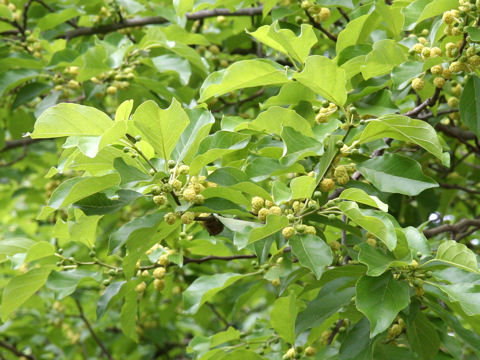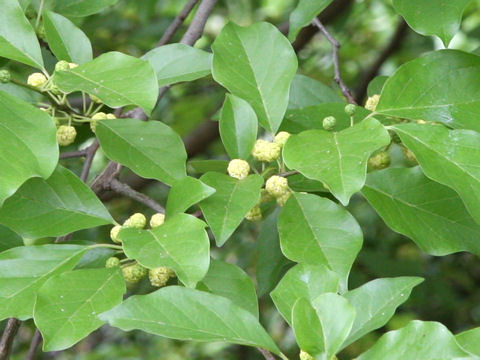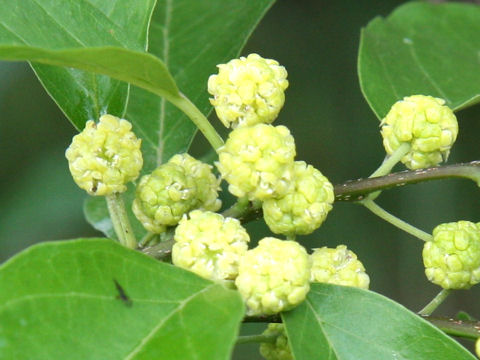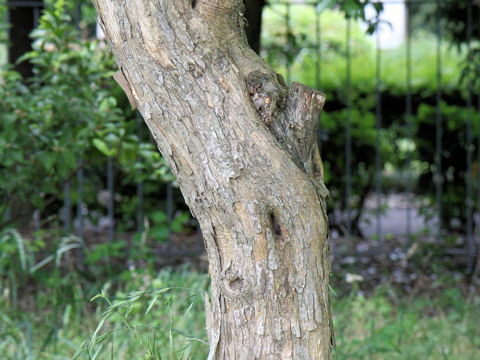 |








|

|
中国から朝鮮半島が原産です。わが国へは古代に渡来しました。高さは8〜10メートルになり、枝には0.5〜3センチの棘があります。葉は、卵形または倒卵形で互生します。雌雄異株です。花は黄色で球状花序につき、6月ごろ咲きます。果実は痩果の集合果で、赤色から赤えび茶色に熟し、食べられます。葉は「くわ」の葉が少なくなったときの、蚕の代用餌として利用されます。中国語では「柘(zhe)」と呼ばれます。
|

|
クワ科ハリグワ属の落葉小高木で、学名は Maclura tricuspidata (syn. Cudrania tricuspidata)。英名は Chinese mulberry。
|

|
The Chinese mulberry (Maclura tricuspidata) belongs to Moraceae (the Mulberry family). It is a semi-tall decidouos tree that is native to China and the Korean Peninsula. It was introduced into Japan in ancient times. It can reach 8-10 m in height. The branches have spines, 0.5-3 cm long. The leaves are ovate or obovate and alternate. This tree is dioecious, with male and female flowers on different plants. The flowers are yellow and bloom in the ball-shaped cluster in June. The fruits are edible aggregate of achenes, and ripen in red or maroon-red color. The leaves serve as a backup food for silkworms when mulberry leaves are in short supply. In Chinese, it is called "柘" (zhe).
|

|
茨城県つくば市「つくば実験植物園」にて、2009年05月23日撮影。
|



